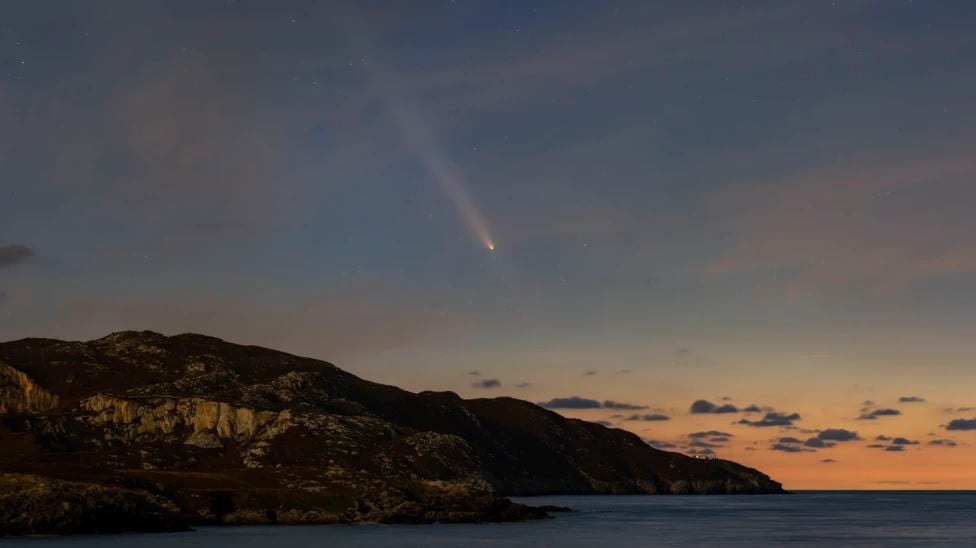
A rare comet, C/2023 A3—known as Tsuchinshan-ATLAS—will be visible Thursday night in the United States, marking a unique celestial event that won’t occur again for tens of thousands of years, according to NASA.
The comet, which comes from the distant Oort Cloud, was first spotted on September 28 and made its closest approach to Earth on October 14. NASA estimates the comet won’t return for at least 80,000 years unless its path is altered by other celestial bodies.
Bill Cooke, a NASA astronomer, recommends stargazers look toward the southwest just after sunset, with the comet’s tail expected to appear between the Sagittarius and Scorpio constellations, about 10 degrees over the western horizon.
The Italy-based Virtual Telescope Project will livestream the comet on October 21. Tsuchinshan-ATLAS is expected to remain visible in the night sky until October 24, gradually fading before disappearing in early November.
In recent weeks, several celestial events have been observable across the US. A significant geomagnetic storm pushed the northern lights as far south as Texas last week, while the October full moon is set to become the largest supermoon of the year, appearing about 14% larger than average.
It will reach its closest point to Earth shortly after 11 pm EDT on Thursday. Additional astronomical events, including the ATLAS comet later this month and the Southern Taurids meteor shower during the winter, will also be visible.
1729662874-0/One-Direction-(1)1729662874-0-405x300.webp)


1722421515-0/BeFunky-collage-(19)1722421515-0-165x106.webp)

1732085354-0/insta-(1)1732085354-0-270x192.webp)











COMMENTS
Comments are moderated and generally will be posted if they are on-topic and not abusive.
For more information, please see our Comments FAQ